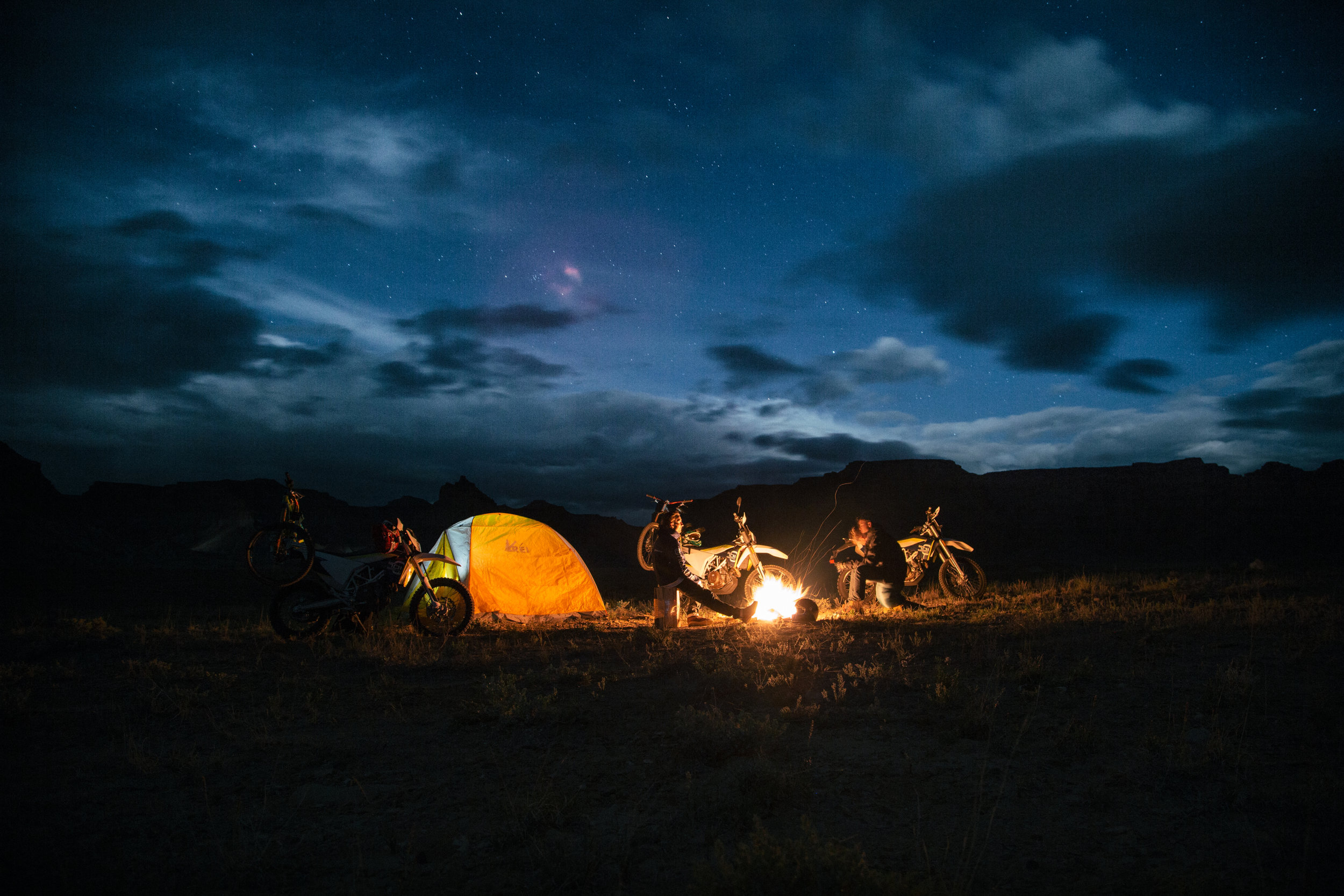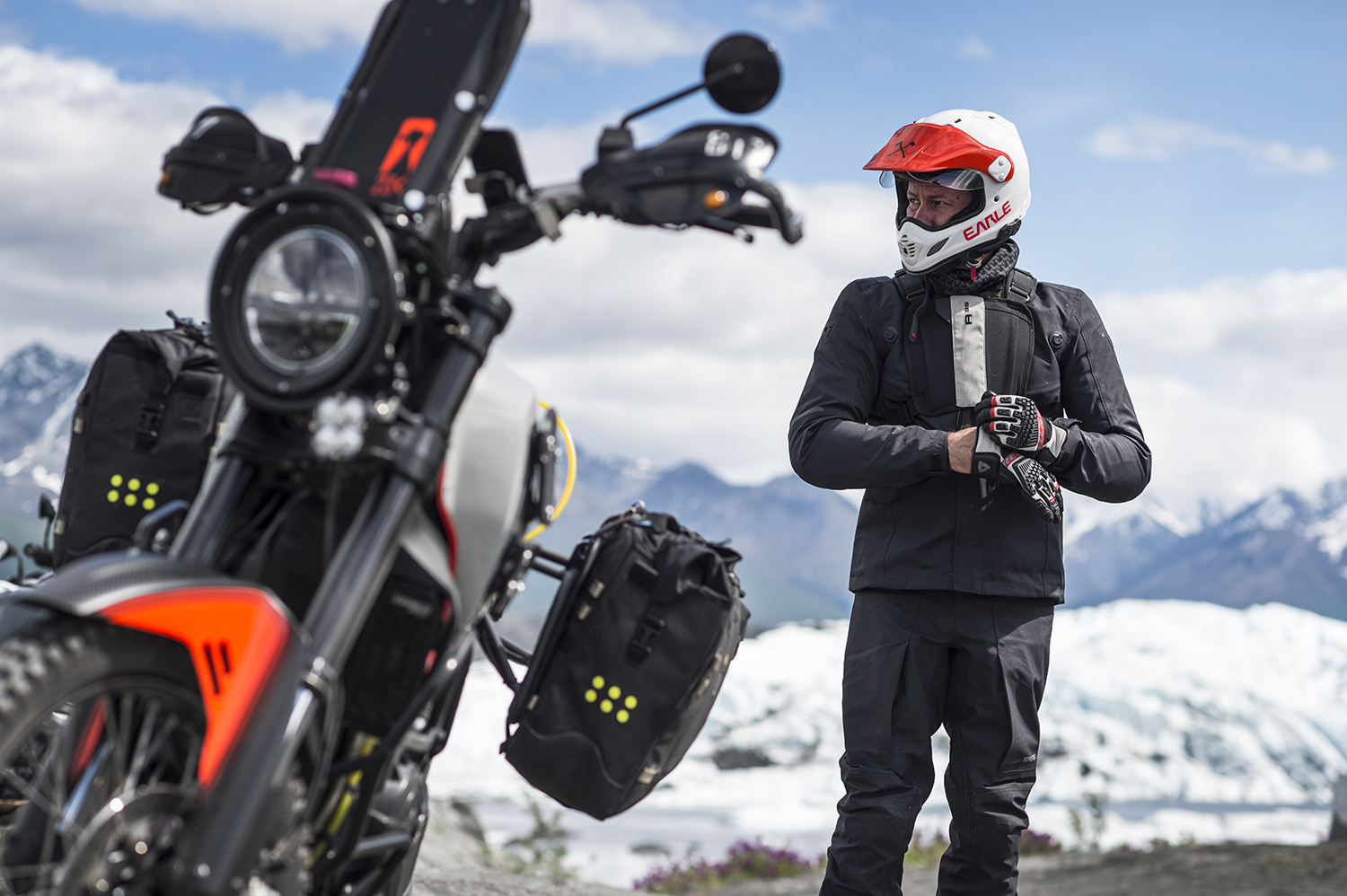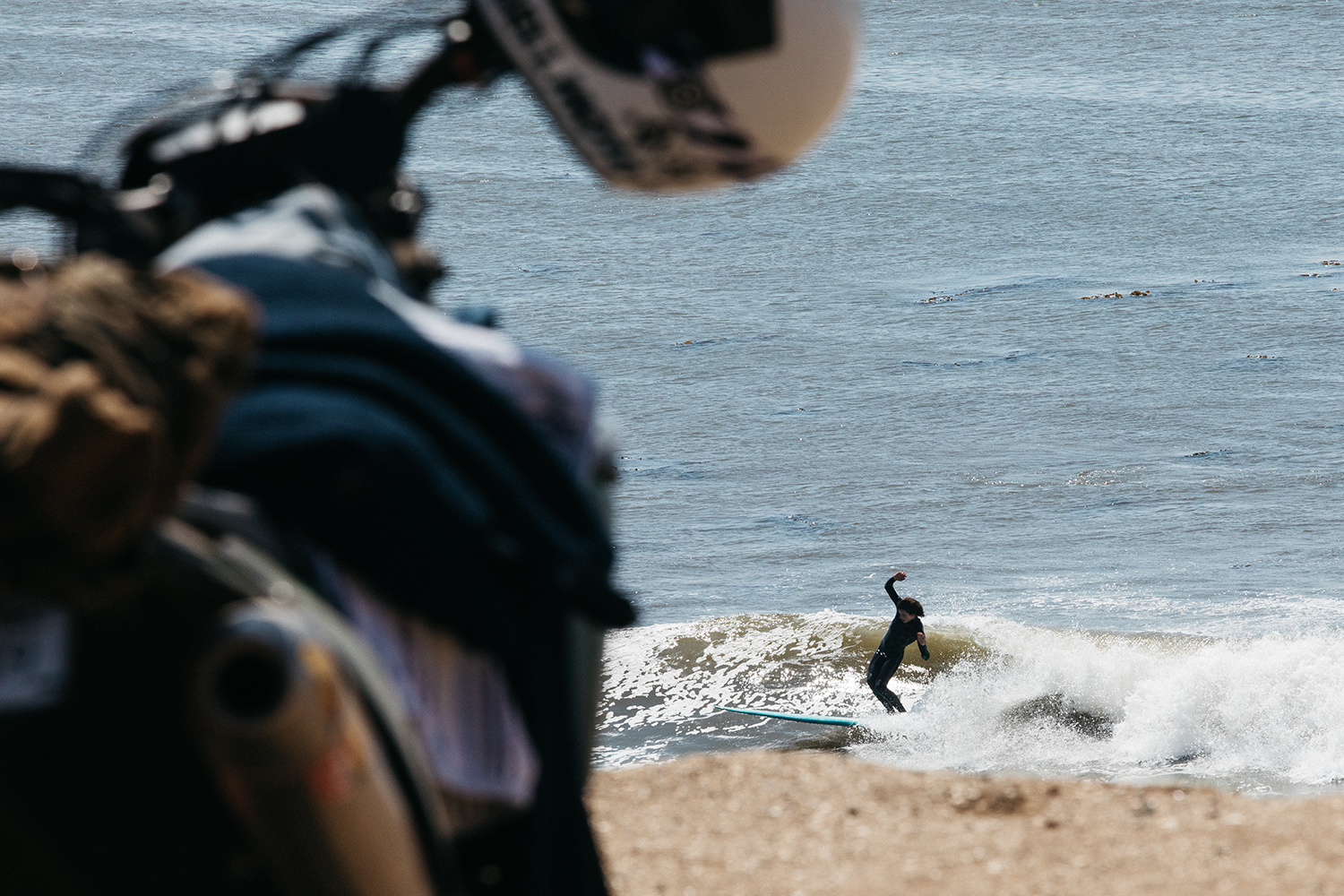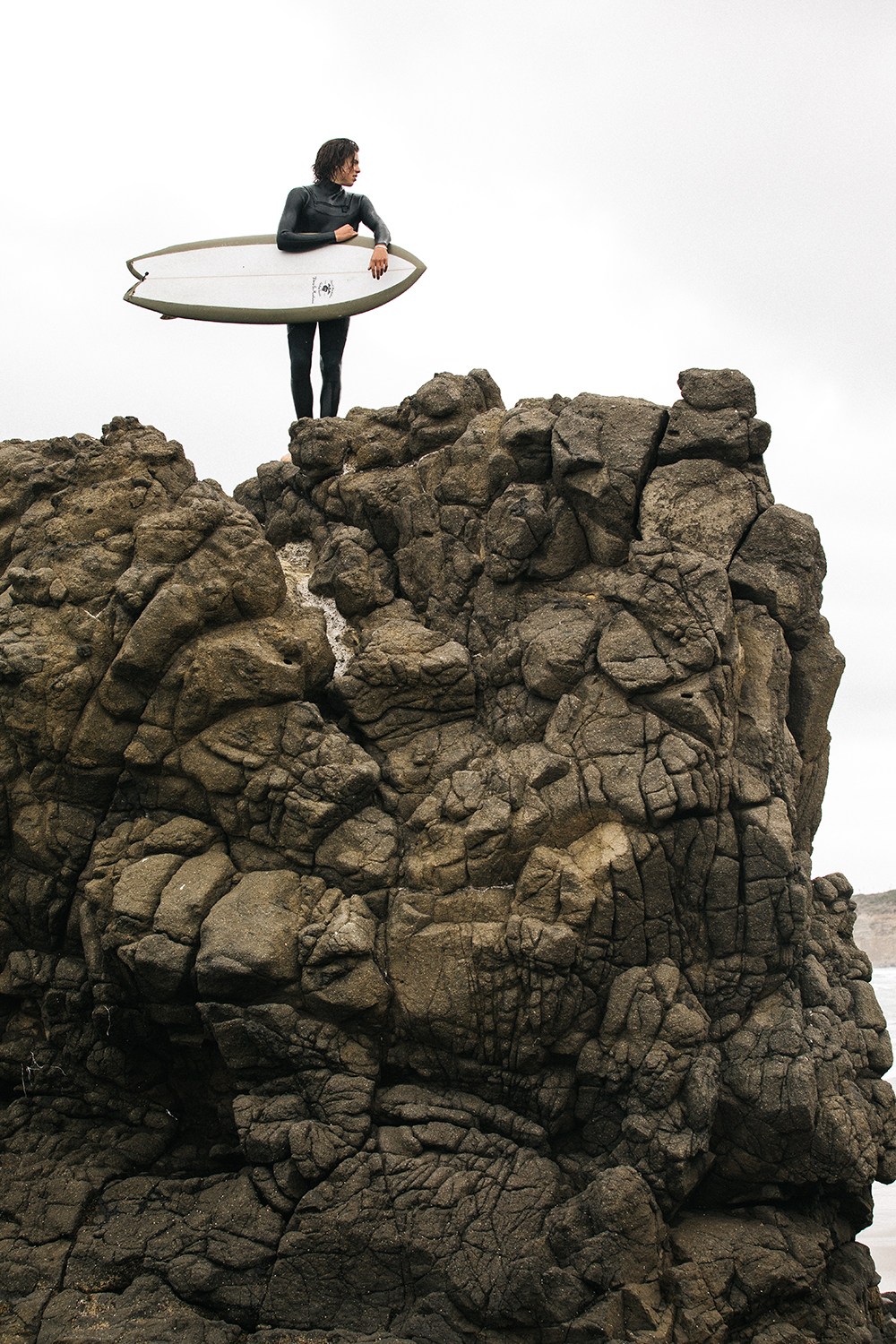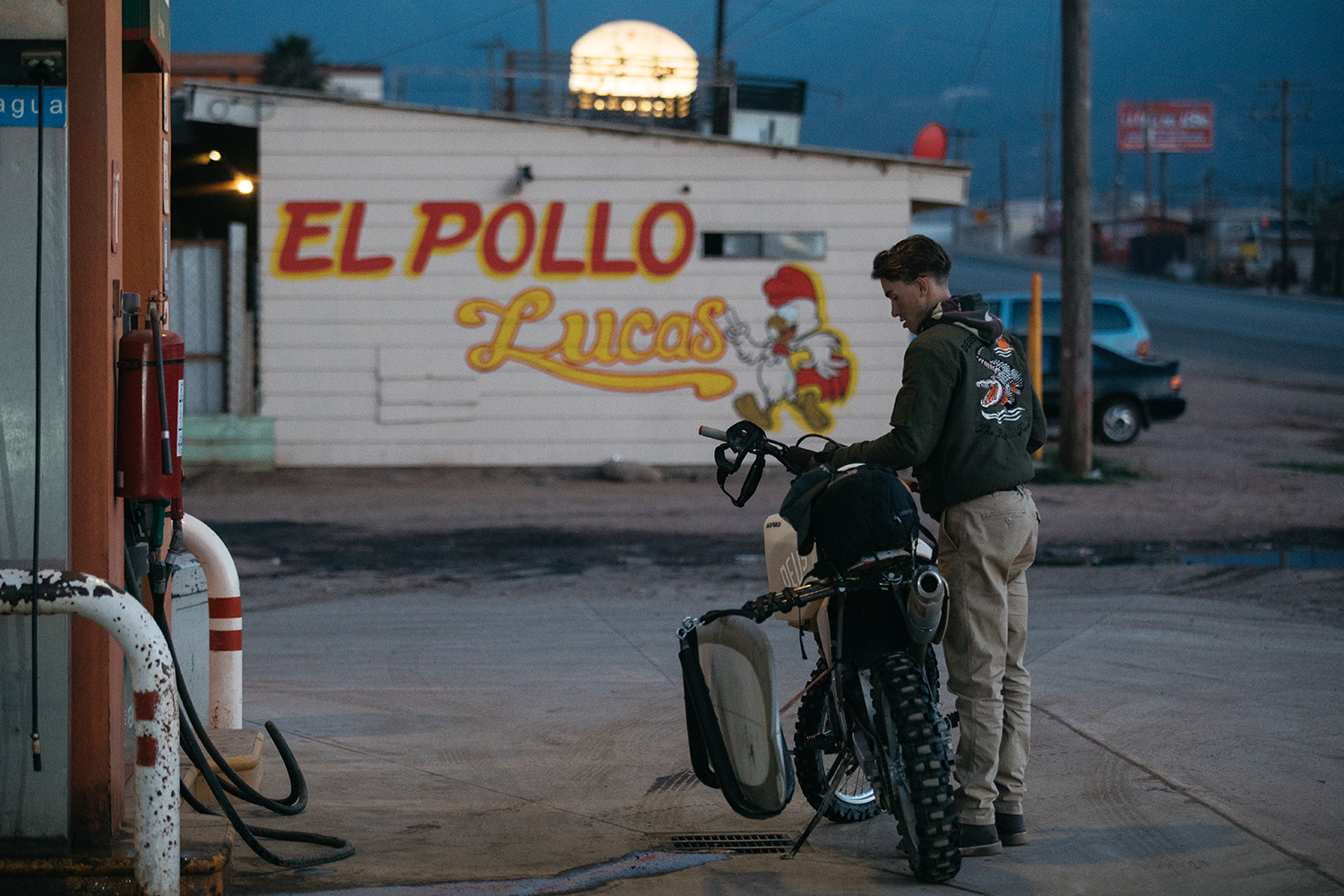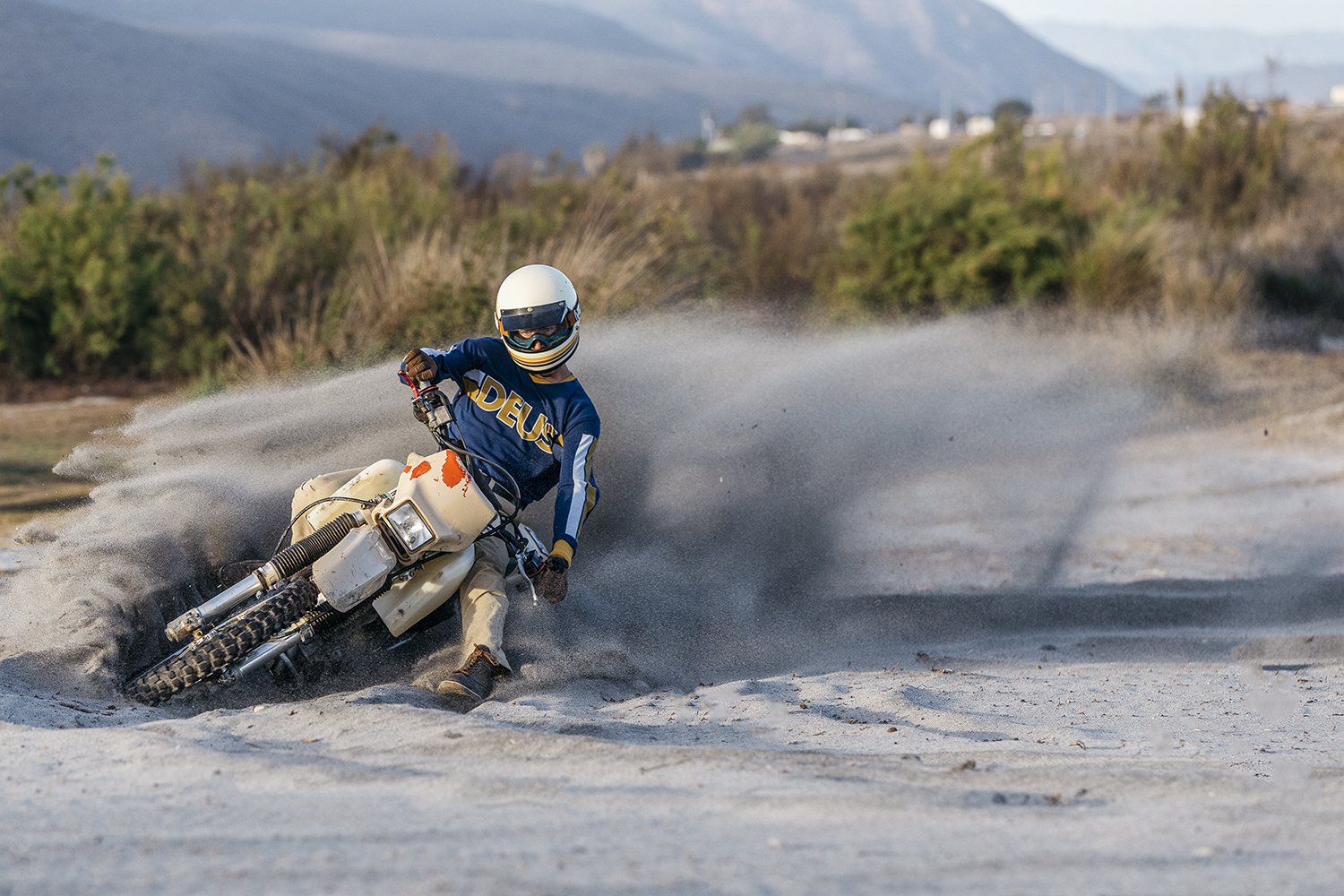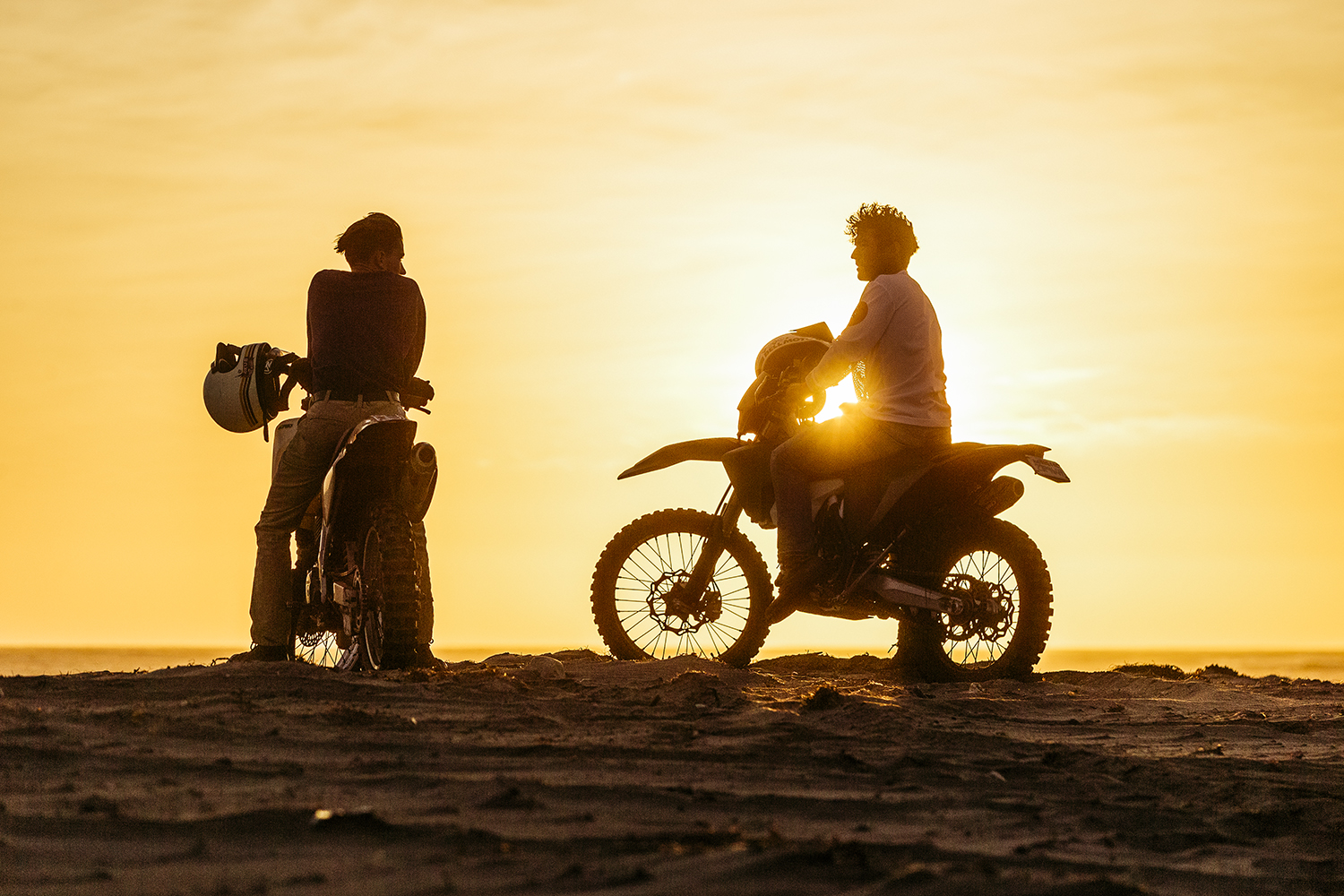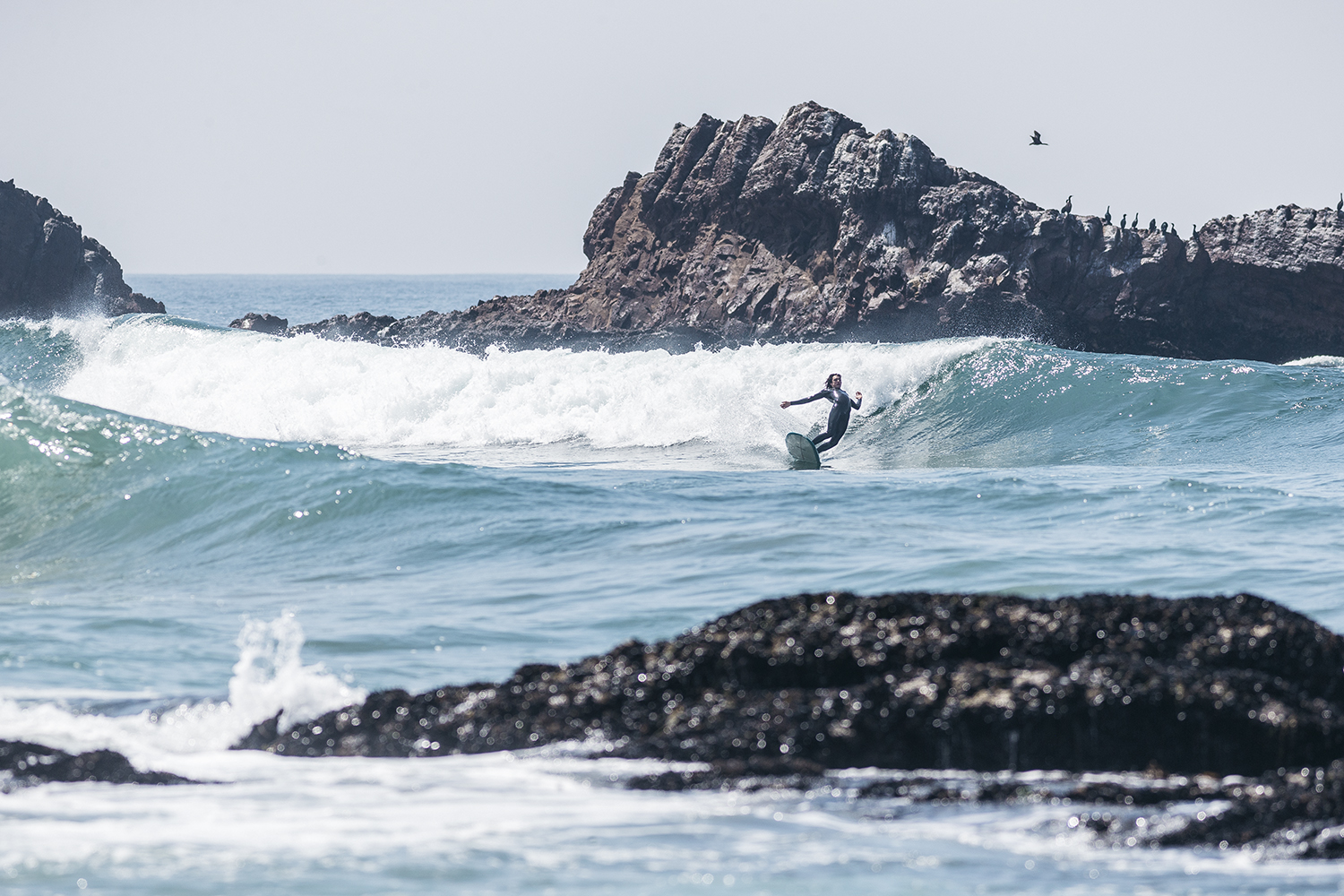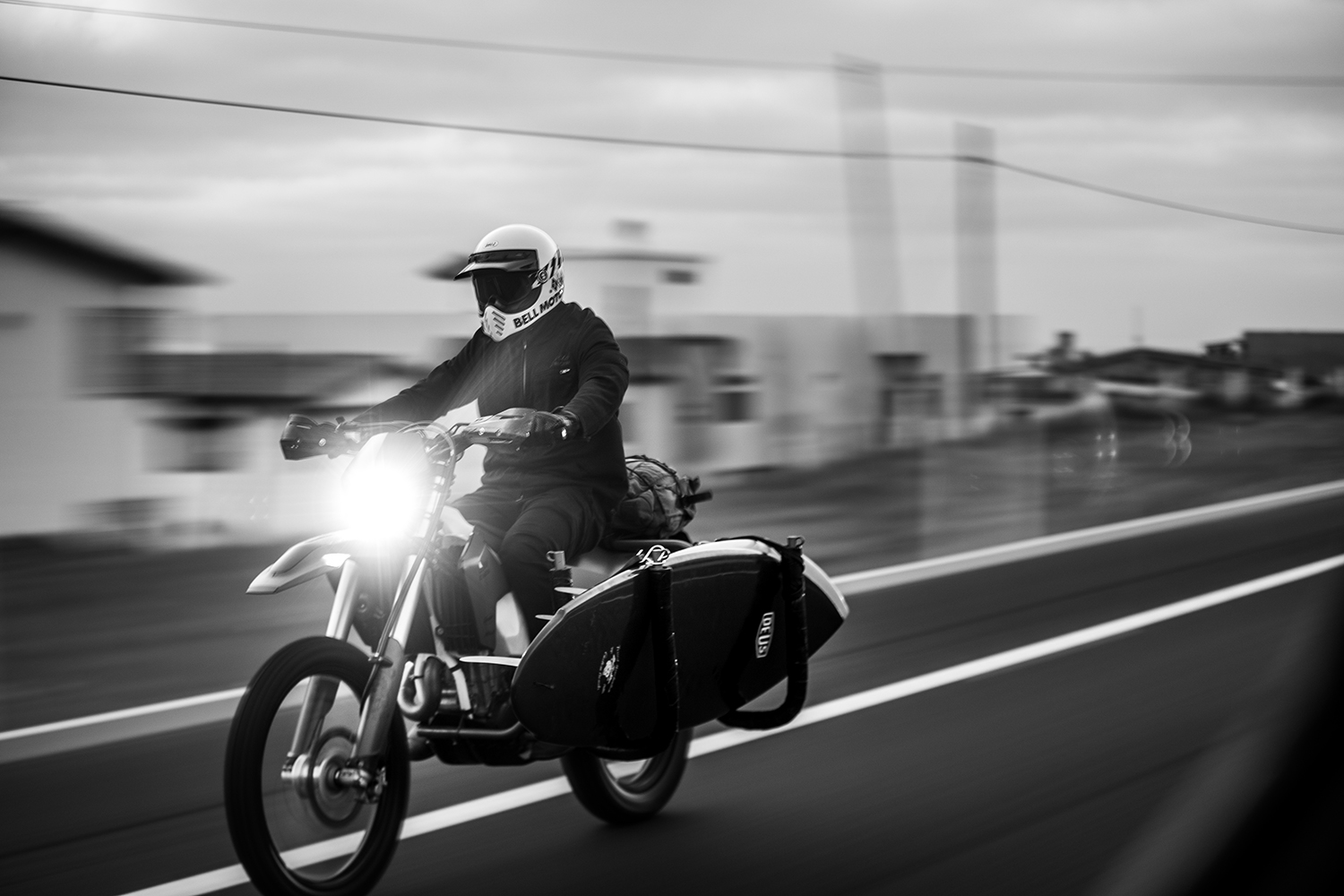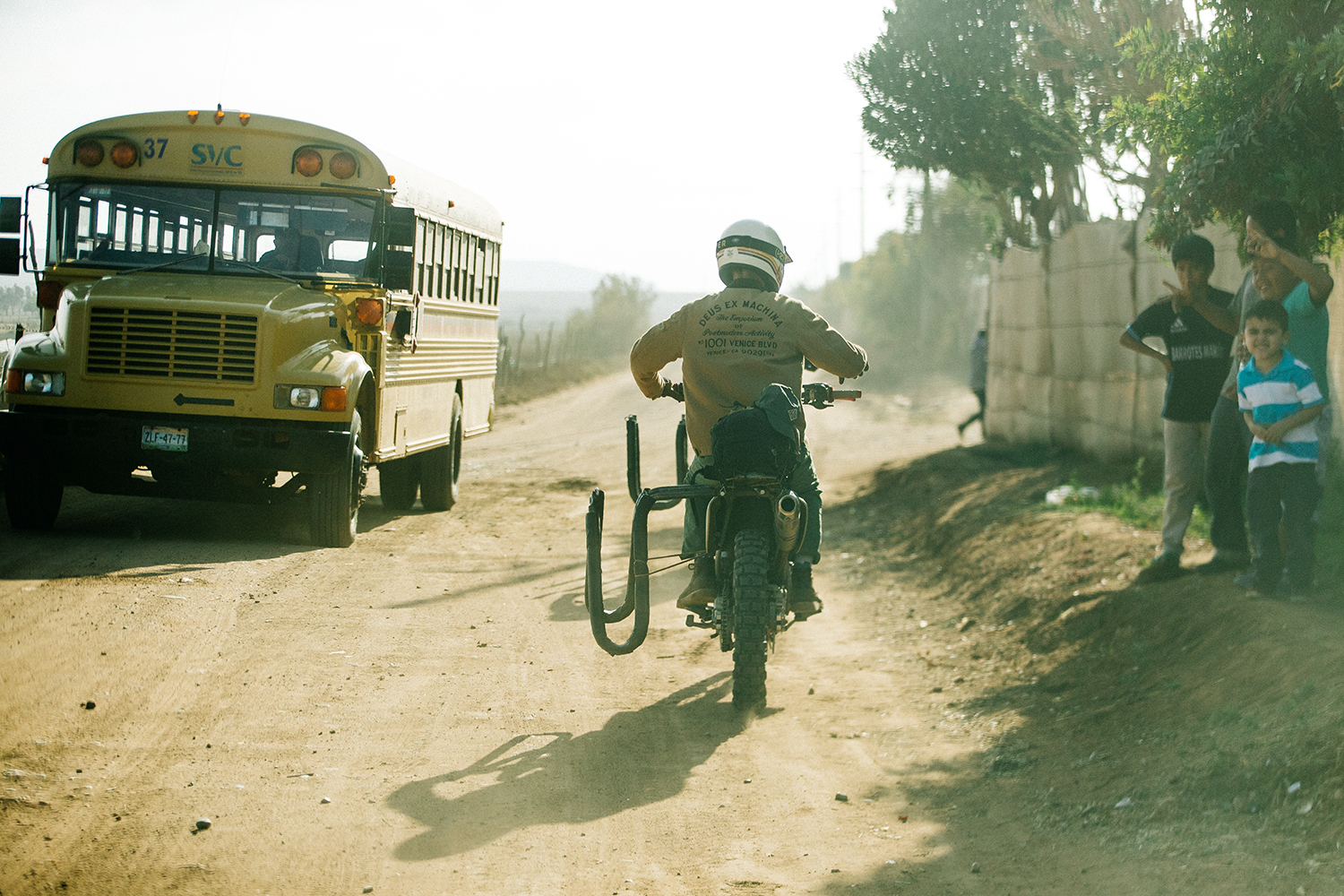Bringing Old Bikes Back From the Dead
Words & photos by Todd Blubaugh
Scotty Stopnik
“Cycle Zombies is a family that was born and raised in Orange County, CA. It was never founded, it just happened. Surfing, skateboarding, building and riding old motorcycles, is a life we live and breath everyday, it’s not a club or a gang, but a brotherhood of family and friends who ride together and care for each other...
Digging up old bikes and bringing them back to life with a new look. We’re not trying to re-invent the wheel, but only make them turn again...”
–Scotty Stopnik
You’ve probably seen or heard of the Cycle Zombies by now. Their exposition is consistently present at events and between the pages of most magazines like this one. But even though I’ve been familiar with their reputation for over a decade, when asked, I could not confidently define them beyond their imagery of sunny surf and rusty bikes. So, I introduced myself to Cycle Zombies’ own Scotty Stopnik, and we arranged to meet at their shop for an afternoon ride the following week.
Big Scott
I arrived in Huntington Beach, California, just before 11 a.m. on December 11. The address took me to an industrial maze of shipping containers somewhere on the west side of town. Scott Senior, otherwise known as Big Scott, greeted me at the garage door and helped to remove the honeybee stinger that had been stuck in my face for the last 10 miles. Although I had seen Big Scott at many different events, this was the first time we had ever met.
He was welcoming and kind. I noticed immediately that his step and posture were light, and he spoke with a youthful syntax. I found it hard to believe when he told me he is 60 years old. The garage was well organized, and Scott showed me the lineup of each bike on the floor—explaining where it came from and the work he had yet to do. The garage door adjacent to the Zombies was open, and from it, in walked a man wearing a CZ T-shirt named John Moss. Scott introduced us and explained that John was a skilled fabricator and artist who had been in this spot longer then they had. John was quiet and accommodating, and it was obvious that he was a close friend of the Zombies’. He rode an aggressive, full–rigid cone-nosed shovel and accompanied us the rest of the day.
Taylor Stopnik, Scott’s youngest, arrived moments later on a 1965 pan with 1980s shovelheads—the displacement was 96 inches. Like his dad, he explained to me many of the subtle details and the history of the bike, including the dual thunder-jetted Super E that carbureted it. Taylor spoke with deliberate calm, but I could tell he did not like to explain himself. He had an anxious undercurrent that he governed well with graceful conversation. Last to arrive was Scotty, who showed up with a dripping wetsuit and apologized for his tardy entrance: He had been enjoying the waves this morning.
I walked around and photographed the shop while listening to Scotty talk about his morning. Scotty felt strangely familiar to me, and I realized then that it was his voice; he and his cousin Chase Stopnik sound almost indistinguishable. I had just met Scotty, but I’ve have known Chase for years—he now lives in Los Angeles just blocks away from me, but this was where he grew up—and I could hear the years of influence in Scotty’s voice as he explained the surf to his brother and his dad.
Taylor Stopnik
Though I have come to recognize them through their motorcycles, I am well aware that they have another dynamic about them: Surfing and skating is as much, if not more, a part of their DNA as the bikes. And when they were together, they did not speak like bikers; they sounded more like surfers, which I found refreshing. It seems that all too often there is a very machismo energy to these shop proceedings. But here with the Cycle Zombies, there was a physical energy to their discussion—devoid of ego and full of excitement as they spoke of surfing—which I should mention I know nothing about.
Everyone was hungry, including John from next door, so we devised a plan to ride the coast down to a sandwich shop on Seal Beach. Everyone grabbed a bike, someone locked down the shop, and we headed out for lunch.
I’m unfamiliar with Huntington, so I rode in the middle, shooting and framing where I could. Traffic was not busy and frantic like in L.A., and we had, by comparison, plenty of road to ourselves. We had a moment of typical mechanical mutiny when John’s clutch linkage snapped, but we fixed it with a short length of bailing wire and my Leatherman. Once we were along the waterfront, it was interesting to see the Zombies change their proverbial ”gears.” They did not speed as they did through city blocks, but maintained a consistent pace at which they could divert all their attention to the surf. They watched it as prey—and like pack animals, would occasionally herd together in one lane and discuss their observations.
We parked our bikes in a line outside of a classic little deli on the Pacific Coast Highway called John’s Philly Grille. On the east-facing porch, I listened to Big Scott talk about growing up in Huntington. It occurred to me that this was the true origin story of the Zombies, when Big Scott was befriended by the Hessians MC 1% club in 1959; he was 12 years old and grew up next to their clubhouse/garage, where he learned how to customize bikes. He applied their taste and stylings to his bicycles, and the Hessians helped him in exchange for sweeping the shop and polishing chrome. They even took him around to custom motorcycle shows.
He started building motobikes as soon as he got his license. Then his priorities shifted to his family and career for a term (I should mention that Scott has seven kids—three boys and four daughters), but as soon as his sons were old enough, they took an interest in bikes, too. Huntington was the perfect place to incubate their lifestyle, and the Cycle Zombies’ legacy began to take its shape. The name evolved a little later as their reputation grew and it became necessary to define themselves. “Zombie” is a descriptive reference to the once-dead aspect of the “Cycles” they now ride.
There was no tone of authority as I listened to Scott Senior and Scotty describe Huntington; there was very little evidence of father and son. Instead, their communication was much more like close friends. Hearing their stories, it seemed as though I was sitting with two long-invested collaborates. Taylor, however, spoke less but listened contently. He seemed to be quieter by comparison, or at least a bit more guarded in his conversation. So, by the same limited comparison, Taylor seemed more in the manner of his other brother Turk Stopnik, whom I have had the pleasure of knowing for a couple of years. Turk is the middle Stopnik and now works as a firefighter in the forests of California—Big Scott spoke of him proudly. I could not help but wish he were here for this conversation, but regardless of the distance, it was obvious they remained a close tribe.
There was no tone of authority as I listened to Scott Senior and Scotty describe Huntington; there was very little evidence of father and son. Instead, their communication was much more like close friends. Hearing their stories, it seemed as though I was sitting with two long-invested collaborates. Taylor, however, spoke less but listened contently. He seemed to be quieter by comparison, or at least a bit more guarded in his conversation. So, by the same limited comparison, Taylor seemed more in the manner of his other brother Turk Stopnik, whom I have had the pleasure of knowing for a couple of years. Turk is the middle Stopnik and now works as a firefighter in the forests of California—Big Scott spoke of him proudly. I could not help but wish he were here for this conversation, but regardless of the distance, it was obvious they remained a close tribe.
After lunch, we rode back along the waterfront toward the container yard. At a red light, I saw Scotty watching the ocean with intimate focus. I could recognize the power it had over him (as can any man recognize the pull of passion when it is near), but I could not identify with this dimension of the Cycle Zombies. It was a different language to me, but they understood it thoroughly—and it clearly shouted at them over the sounds of their own bikes. When we got back to the shop Scotty admitted that he would have much rather been surfing than riding today.
We kicked tires in the sidelong light of later afternoon. Scotty did burnouts and pushed around on his skateboard until he had to go pick up his youngest boy, Sid. When they returned, I saw three generations of Stopniks in motion; one-and-a-half-year-old Sid played about the garage with definitive pleasure, just like his father and grandfather.
It is a long road that eventually reaches the place in life where we no longer need to define ourselves—a place where our purpose is simply understood. Only after countless dead ends and detours (if time favors) do we arrive at such a point. Further along even still is when that definition is passed on and secured beyond our mortal time. Many do not make it this far. But, after one ride with the Stopniks, it is clear to me that they have indeed arrived—and they call it the Cycle Zombies.
























































